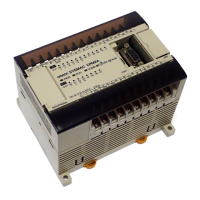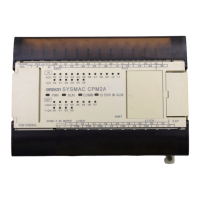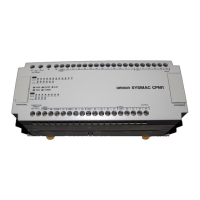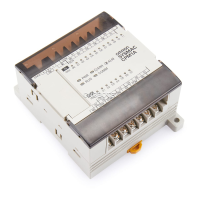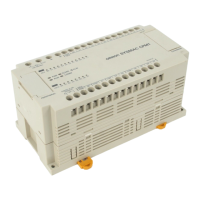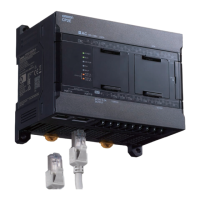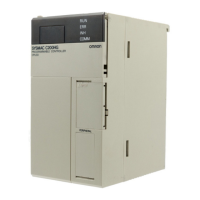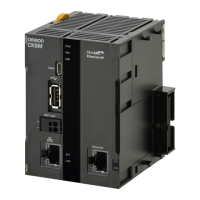4
CPM2C Features and Functions Section 1-1
Other Functions
Interval Timer Interrupts The interval timer can be set between 0.5 and 319,968 ms and can be set to
generate just one interrupt (one-shot mode) or periodic interrupts (scheduled
interrupt mode).
Calendar/Clock In CPU Units with a built-in clock, the clock (accuracy within 1 minute/month)
can be read from the program to show the current year, month, day, day of the
week, and time. The clock can be set from a Programming Device (such as a
Programming Console) or the time can be adjusted by rounding up or down to
the nearest minute.
Long-term Timer TIML(
−−) is a long-term timer that accommodates set values up to 99,990
seconds (27 hours, 46 minutes, 30 seconds). When combined with the SEC-
ONDS TO HOURS conversion instruction (HMS(
−−)), the long-term timer pro-
vides an easy way to control equipment scheduling.
Greater Data Handling Capability with Expansion Units
Analog I/O Supported Up to 4 Analog I/O Units can be mounted to the CPM2C. For each Analog I/O
Unit mounted to the Unit, 2 analog input points and 1 analog output point are
available. By mounting 3 (see note) Analog I/O Units, a maximum of 8 analog
input points and 4 analog output points can be made available. (By using a
combination of the PID(
−−) instruction and PWM(−−) instruction, time propor-
tional control is possible.)
• The ranges supported for analog input signals are 0 to 5 V, 0 to 10 V, –10
to 10 V, 0 to 20 mA, and 4 to 20 mA, and the resolution is 1/6000 (full
scale). The average processing function and power interruption detection
function can be used.
• The ranges supported for analog output signals are 1 to 5 V, 0 to 10 V,
–10 to 10 V, 0 to 20 mA, and 4 to 20 mA, and the resolution is 1/6000 (full
scale).
Note When using the CPM2C-PA201, there is a limit to the number of CPM2C-
MAD11 Units that can be connected. This limit ensures that the power con-
sumption of the CPU Unit, Expansion Units, and Expansion I/O Units does not
exceed the total power capacity of the service power supply from the Power
Supply Unit (24 V x 600 mA = 14.4 W).
• CPU Unit with 4-W power consumption: Connect no more than two
CPM2C-MAD11 Units
• CPU Unit with 3-W power consumption: Connect no more than three
CPM2C-MAD11 Units
Temperature Sensor Units Up to 4 Temperature Sensor Units can be mounted to the CPM2C. There are
2 models of Temperature Sensor Unit: One for input from a thermocouple sen-
sor and one for input from a platinum resistance thermometer sensor. There
are 2 input points on each Temperature Sensor Unit.
• Thermocouple inputs (and measurement ranges): K (–200 to 1,300
°C,
0.0 to 500.0
°C), J (–100 to 850°C, 0.0 to 400.0°C).
• Platinum resistance thermometer inputs (and measurement ranges):
Pt100 (–200.0 to 650.0
°C), JPt100 (–200.0 to 650.0°C).
CompoBus/S I/O Link
Units
The CPM2C can be used as a CompoBus/S Slave (with 8 built-in inputs and 8
built-in outputs) by connecting a CompoBus/S I/O Link Unit. Up to
5 CompoBus/S I/O Link Units can be connected to the CPM2C. In addition to
the conventional “PC + Remote I/O” type of distributed I/O control, “PC + min-
iature PC” distributed CPU control is now possible. This means increased
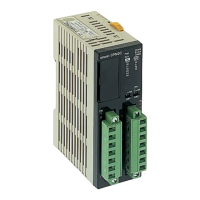
